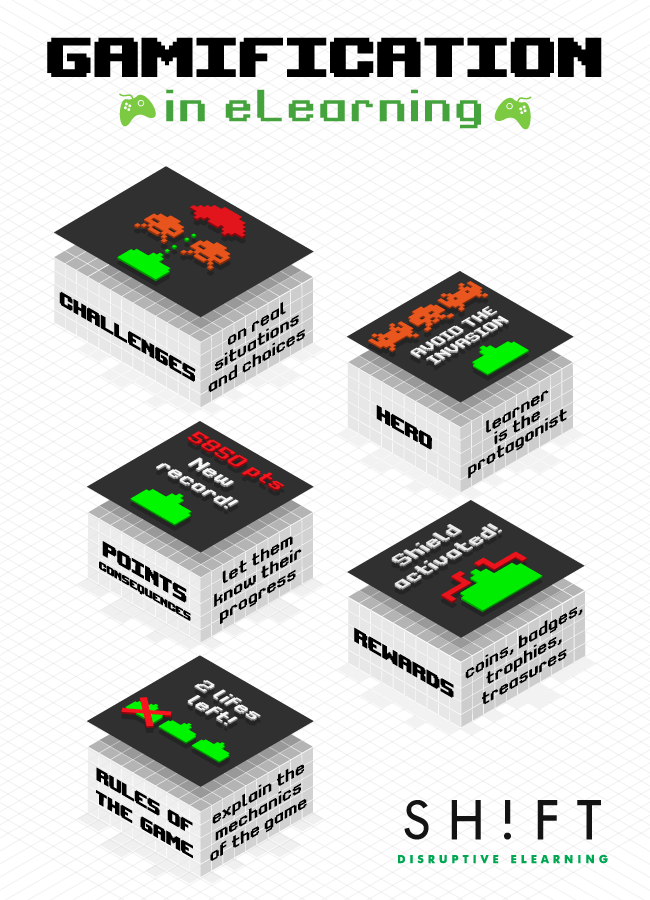
Using Gamification to Attract Online Learners
When planning online learning courses, one of the biggest issues to overcome is engaging students enough that after signing up, they remain motivated enough to keep coming back to the course.
The amount of effort required to sign up to online courses is nearly minimal nowadays, thanks to resources such as Coursera, which offer university-level content that barely needs more than a click to register for.
The natural problem this creates, is that students sign themselves up to multiple courses, with multiple providers, and then only turn up to the one, or perhaps two, courses that attract them the most. The rest of the courses are left behind, never to be visited or followed up on again.
To get repeat visits and dedicated students, online learning courses must not only draw their attention at the first visit, but must also offer enough interesting content to keep the students coming back regularly, with teaching offered in a manner that fosters a motivated student base.

Reaching Online Learners through Gamification (e-Learning Infographics, 2015)
By applying gamification ideas to online courses, students can be compelled to keep coming back and striving to learn that little bit more.
As the above graphic from e-Learning suggests, incorporating 5 game-like concepts can benefit an online course.
Challenges reward learners for completing tasks and meeting learning goals. They can help provide difficulty levels that offer a stepping-stone introduction to new learners, whilst still stimulating more experienced learners.
The Hero concept uses a narrative-like approach to make the learning experience into a story, with the learner at the heart.
Rating progress with a Points system helps a learner to get immediate grading on their performance. This can give them valuable direction to highlight the areas they need to improve the most, whilst also rewarding success in the areas where they excel.
Which also leads to Rewards, largely token gestures (sometimes literal tokens) , where the learner can feel a sense of achievement for accomplishing a learning goal. In online courses, the rewards a learner collects can be displayed on their profile as a means of tracking their educational journey or showing off their performance to others.
Finally, including the Rules of the game helps to guide learners through a course, explaining how things work, how to progress and how performance is ultimately judged.
e-Learning Infographics, (2015). Reaching Online Learners through Gamification Infographic – e-Learning Infographics. [online] Available at: http://elearninginfographics.com/reaching-online-learners-gamification-infographic/ [Accessed 23 Jan. 2016].
Paul 14th January 2016 - 7:08 pm
The point about following through on courses that people sign up too is unfortunately very true for me.
They all sound so interesting at first, but when the time comes that the actual lessons begin, I always seem to find something else to do.
I don’t know what the best solution is. The five points in the article are all reasonable but I don’t know if it would changed anything for me.
I think these learning sites probably just have to be more aggressive and make me immediately do a little bit of learning after I sign up. Once I’ve invested a small amount of time, I’d probably be more likely to come back and keep it going.
Otherwise, they could try threatening me. Perhaps by making me pay £10 to sign up, but promising to refund the money in full when I complete the course. I’m not sure if they’re allowed to do that, but that’s probably the best way to motivate me!!